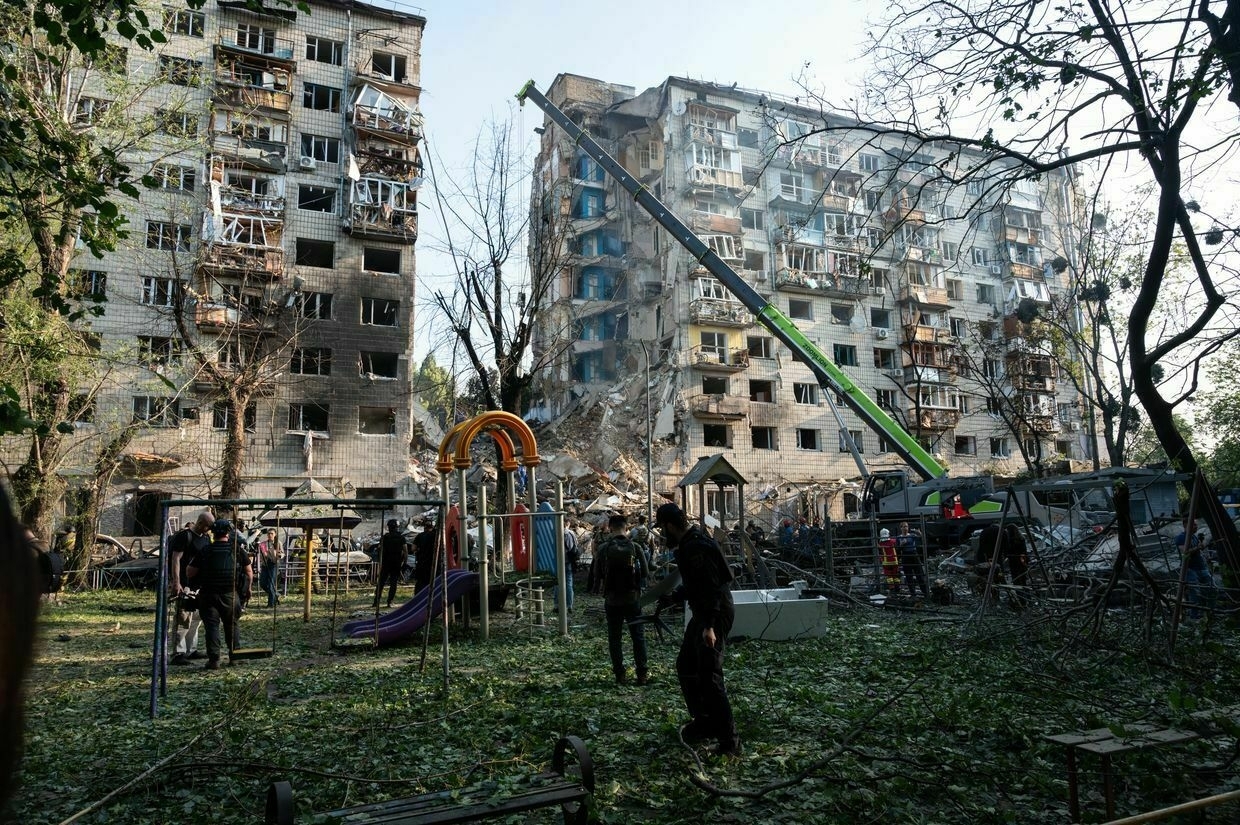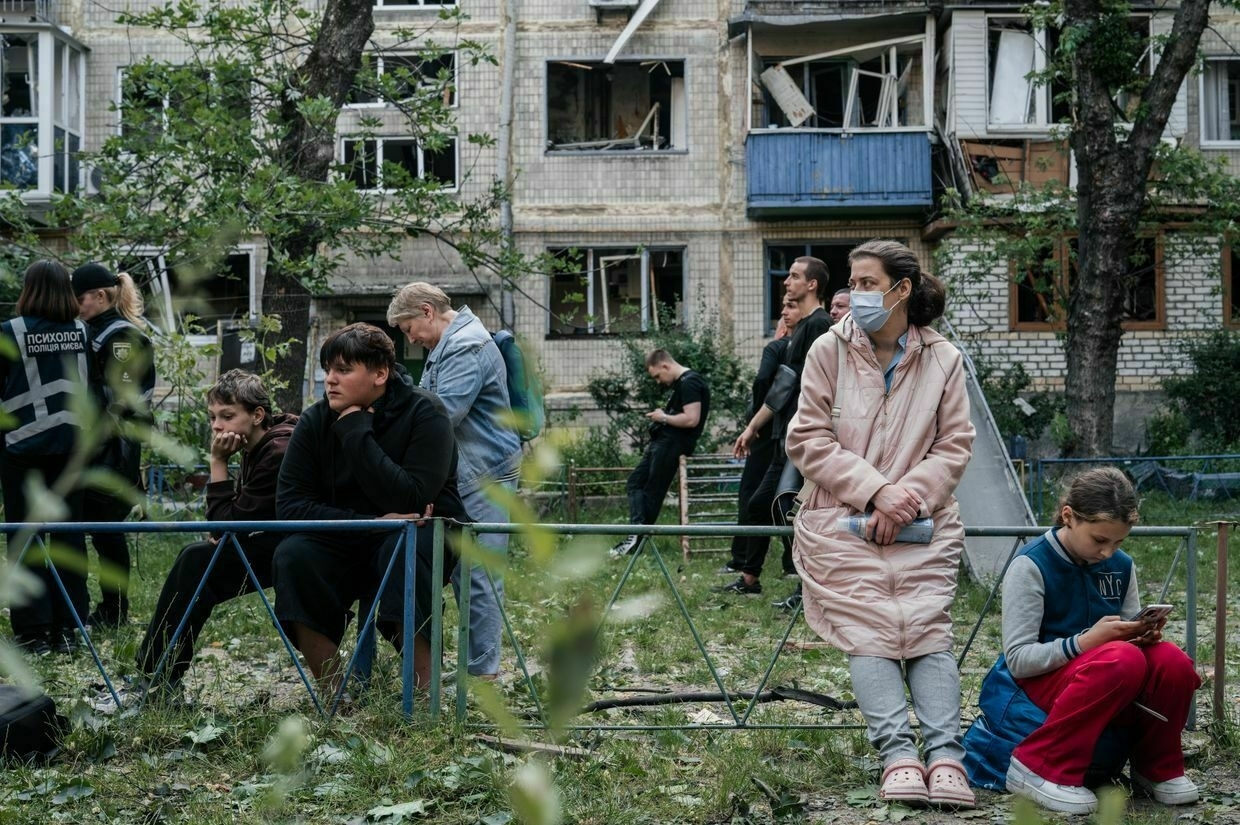
The ongoing and escalating slaughter of Ukrainian civilians depends on two preconditions: Moscow’s determination to erase Ukraine, and the tacit permission it receives from America and Europe.
On Monday, a Russian missile tore through a residential building in Kyiv, leaving at least six civilians dead and over a dozen wounded — including women and children pulled from the rubble in the early hours. “This is what happens when the U.S. withholds air defenses because it doesn’t want to upset the killers in the Kremlin,” remarked Yaroslav Trofimov, Ukrainian-born American journalist, in a post on X.
Russia commits these war crimes, but the dithering of the Free World has let murderous aggression go unpunished for decades. The cost of empty threats from Washington, Berlin, and Paris is measured in lives lost in Kyiv, Kharkiv, and Odesa. If that doesn’t weigh on our collective Western conscience, then we’re not just deluded. We’re complicit.
“While all eyes are on the Middle East, people are dying in Kyiv as Russia bombs Ukraine every day,” EU’s chief diplomat, Kaja Kallas, grimly observed. Between Israel’s first strike on Tehran’s military leadership and American B-2 bombers dropping bunker busters on nuclear sites, Moscow hit Kyiv with its deadliest attack since 2022 — 472 aerial weapons overnight, including nearly 280 Shahed drones. Thirty civilians were killed. One hundred seventy-two injured.
A recent UN report finds that “97% of civilian casualties occurred in areas under the control of the Government of Ukraine.” That’s diplomatic-speak for: Russia targets civilians deliberately, systematically, and relentlessly. No thoughts or prayers will bring back 4-month-old Tymofii Haidarzhi, who never got to say his first word.


When America flinches — issuing threats to Moscow it won’t enforce and promises to Ukraine it won’t keep — this kind of weakness destroys all prospects of peace and prolongs the carnage and stains our national honor. “Vladimir, stop,” said Donald Trump in April: words of steel followed by deeds of mush.
Even those who like to hide under the rock of “not our war” must understand that this isn’t just repeated incoherence — it’s the erosion of American credibility at lightspeed. And when our enemies no longer believe our words, they stop respecting American power.
The U.S. president signaled frustration with Russia’s war-making on April 24th — then promptly declined to support congressional secondary sanctions. Reports suggest the administration is quietly trying to dilute a bipartisan bill meant to choke off Russia’s oil profits and has now blocked European efforts to tighten the G7 price cap.
Russia targets civilians deliberately, systematically, and relentlessly.
Then came the infamous "two weeks" deadlines. On April 24th, May 19th, and again on May 28th, Trump repeated the same hollow threat. Peter Dickinson rightly called "two weeks" a shorthand for "too weak."
And astonishingly, just 14 days after the latest ultimatum, instead of delivering consequences to Moscow, Trump’s Defense Secretary, Pete Hegseth, revealed the plans to slash U.S. military aid to Ukraine in the next defense budget. Fear us — or else we’ll retreat. Is that really the message America wants to send?
To add insult to injury, on June 12th, the State Department issued a tone-deaf press release celebrating "Russia Day." While Ukrainians buried their dead, Washington congratulated the country doing the killing. At the G7, Trump was effectively lobbying for Putin’s rehabilitation — lamenting Russia’s expulsion from the G8, as if the invasion of a sovereign neighbor were a minor diplomatic hiccup. One could almost hear the laughter — and the champagne corks popping— in the Kremlin.
This isn’t about party. It's about a pattern. In 2012, President Obama drew a bright red line in Syria. Assad crossed it, and America blinked. But let’s be honest, this era-defining foreign policy misstep didn’t happen in a vacuum. In 2008, Russian tanks rolled across a sovereign border and occupied Georgian territory. The White House responded with handwringing and hollow statements — completely incommensurate with the gravity of the moment. A territory was effectively annexed, and the precedent was set. Moscow learned that every act of overt aggression would be met with deep concern, not deep strikes. In 2014, Russia’s war on Ukraine began.
Thankfully, there’s another model of pairing rhetoric with resolve instead of regret. Ronald Reagan didn’t bluff. He followed through — methodically, consistently, and with purpose.
He called the Soviet Union an "evil empire"— not as a slogan, but as a signal. Then he rebuilt America’s military, strengthened our alliances, and confronted Soviet aggression wherever it appeared — from Poland to Afghanistan to Libya. Reagan didn’t posture. He didn’t just issue threats—he made them real. And he understood a lesson today’s leaders seem to have forgotten: deterrence is capability plus credibility.
That’s the difference. Peace through strength isn’t a bumper sticker. It’s a doctrine grounded in history. And when powerful nations abandon it, the inevitable result is dishonor through weakness. The next time the U.S. president draws a red line or tweets a threat, it had better mean something.
 The Kyiv IndependentAnna Fratsyvir
The Kyiv IndependentAnna Fratsyvir
